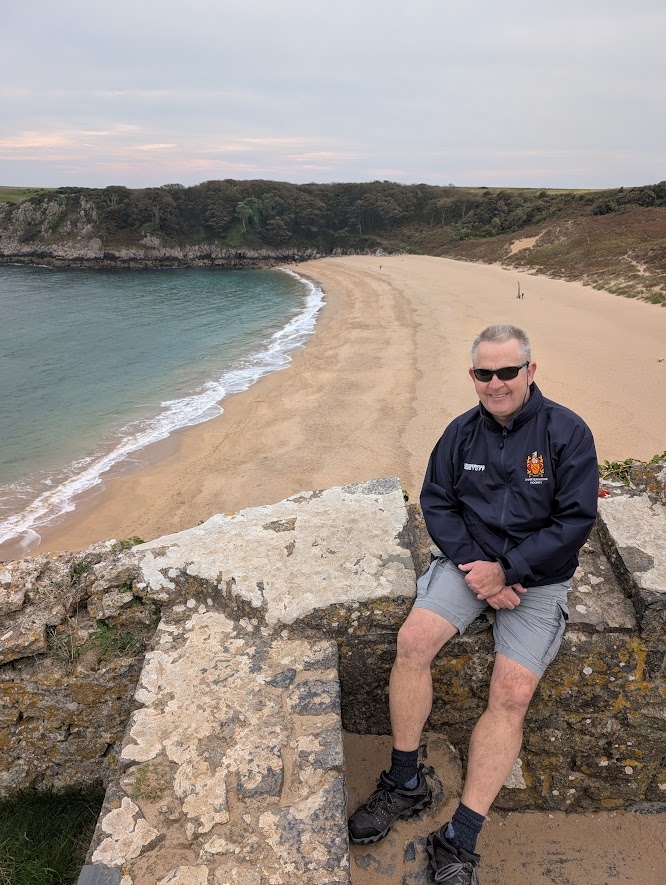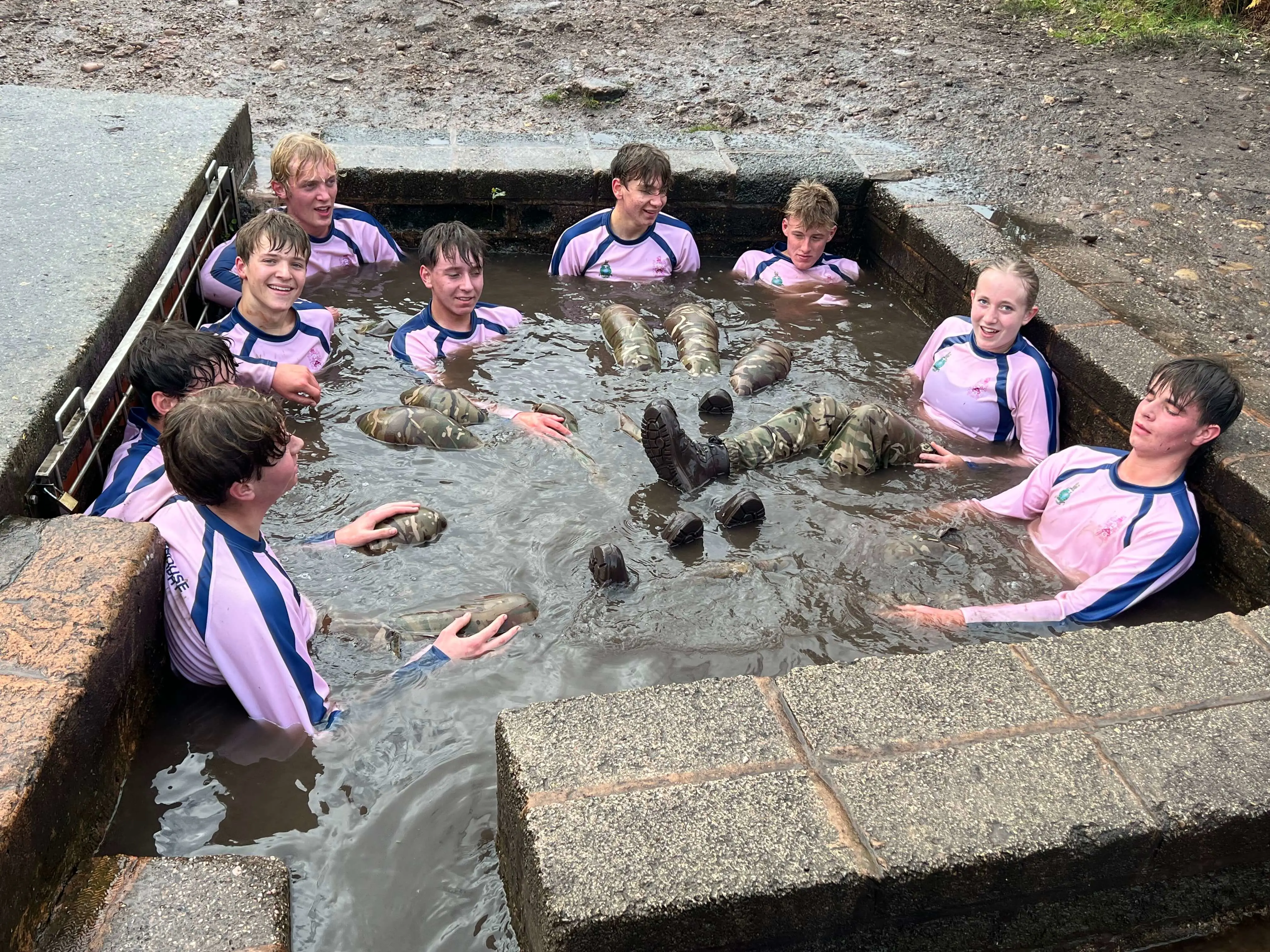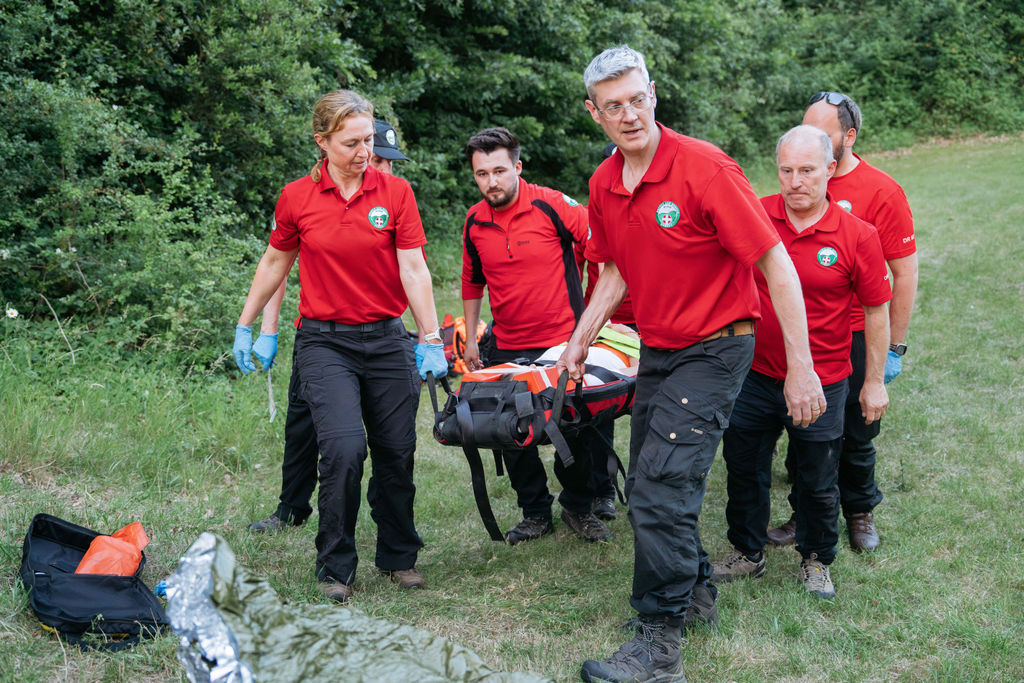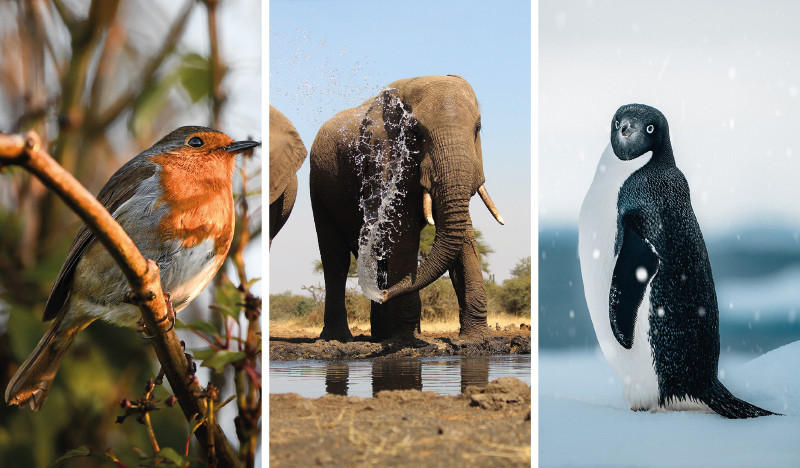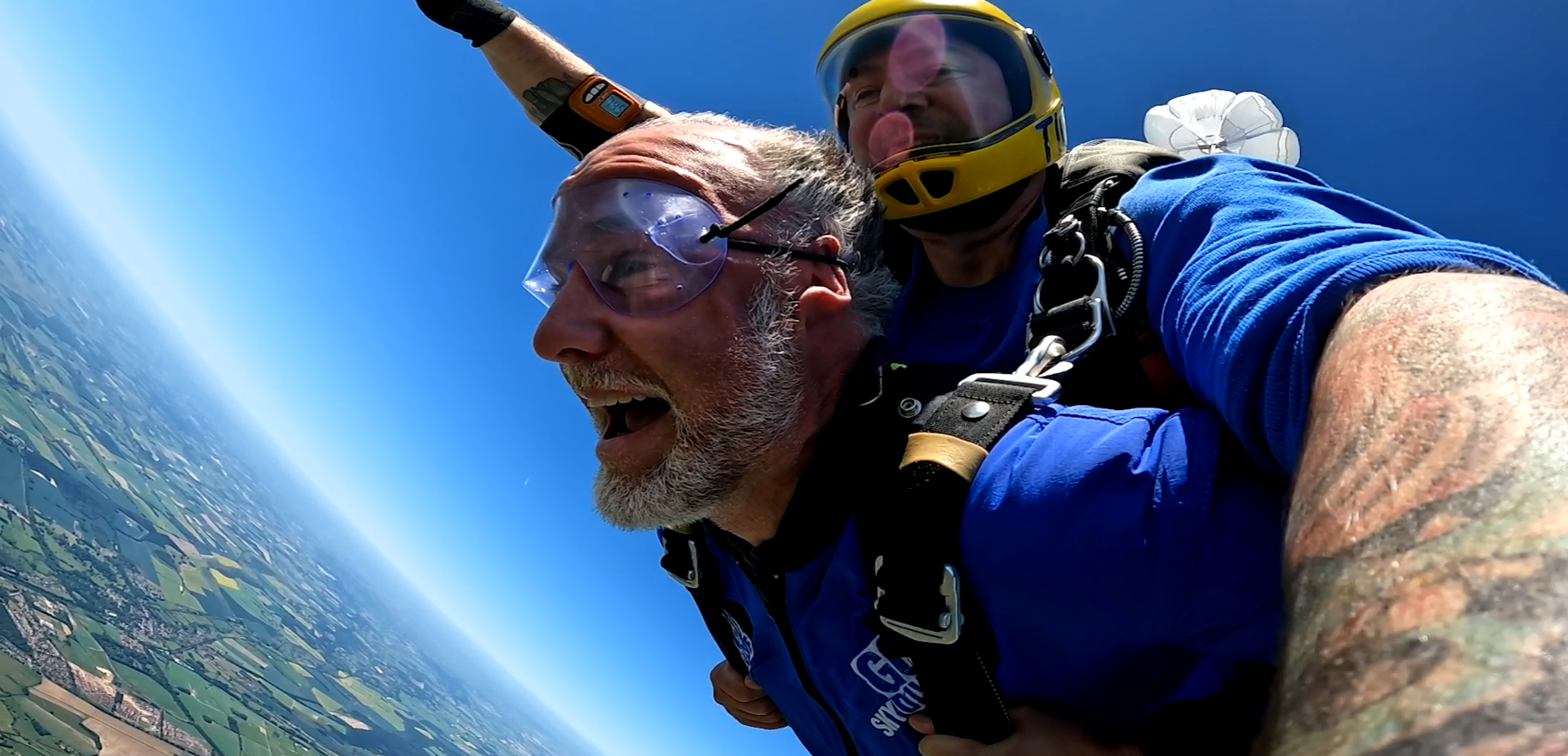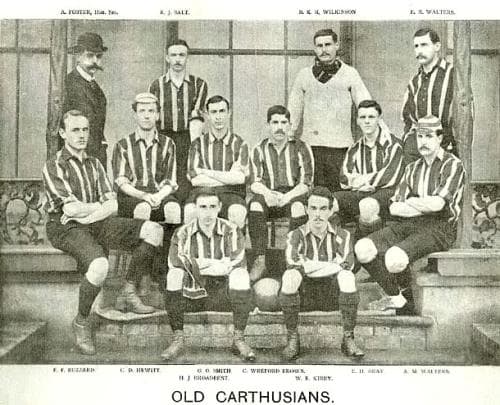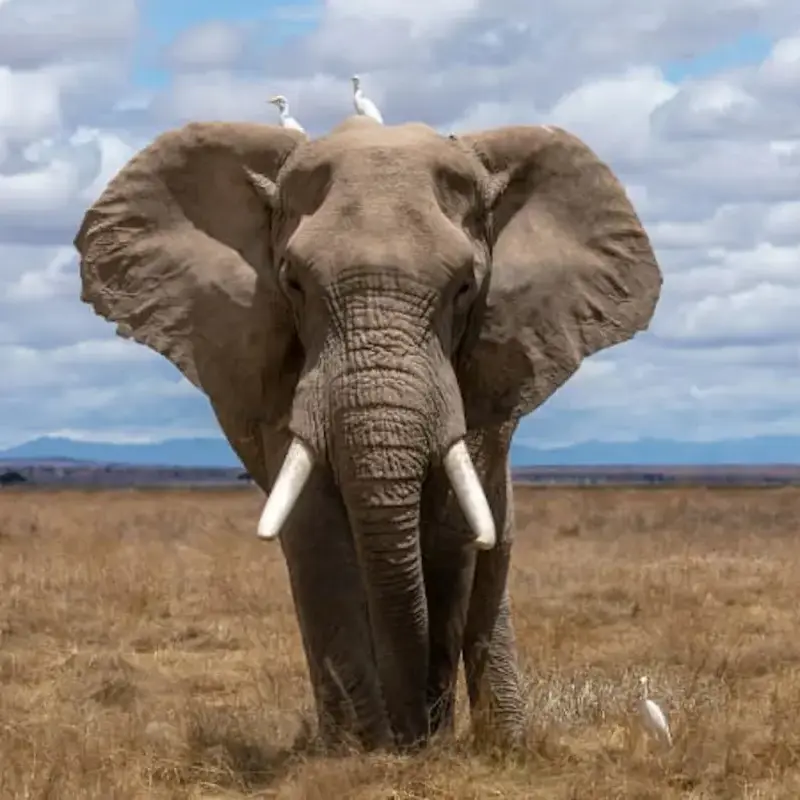Featured
-
Why a Greyhound?
They appear throughout the School's history and are a prominent symbol across campus today, but why?
-
House Glory on Big Ground
Lockites, Saunderites, and Robinites win House Football.
-
The Next Generation of Entrepreneurs
Our pupils are turning their ideas into businesses.
-
Chapel Aglow
The annual beautiful evenings of Candlelit Carols.
-
Bragging Rights on the Line
This year's House Hockey was as tense as ever.
-
Curious Incident
Our talented Carthusians reflect on what it meant to be part of such an important and demanding piece of theatre.
-
Round-Up of Sport
The highly anticipated House Sport finals – and their results.
-
From the Spires of Oxford to Charterhouse
We are thrilled to welcome Anna Camilleri as our new Deputy Head (Academic).
-
Unbeaten Across Europe
An incredible 1st XI Hockey tour to Belgium & Holland.
-
Reel to the Rhythm
The 29th annual St Andrew’s Ball.
-
Engineering the Italian Way
Supercars, craft, and hands-on engineering for DE pupils.
-
Back-to-Back Knockouts
Gripping, unmissable theatre our pupils won’t forget.
-
Seasonal Sparkle from Charterhouse
Looking for a festive keepsake to brighten your tree or for an unusual gift?
-
Round-Up of Sport
Unbeaten sides, cup success, and House Football finals ahead.
-
Silver on the Skyline
112 Removes took on a Silver DofE Expedition in Wales.
-
Beyond the Beaker
Two of our talented Fifth Form (Year 11) pupils have launched a science podcast.
-
Florence on Canvas
Carthusian artists took a trip to Italy that unfolded into days of creativity.
-
More Than Just Nice
A Modern Languages trip to the southeast coast of France.
-
Why Don't We Have Blue Roses Yet?
Insights from AJ as he explores the "holy grail" of flowers.
-
Sharpshooting Through the Glare
The BSSRA English Schools Long Range Competition.
-
Celebrating Culture, Bringing Learning to Life
Pupils immersed themselves in the vibrant traditions of El Día de Muertos.
-
A Run Between Worlds
A 60km route from Charterhouse to The Charterhouse London.
-
From Tokyo Lights to Temple Heights
Adventuring through Japan’s temples, traditions, and timeless spirit.
-
Connection, Expression and Joy – Introducing Our Head of Dance
Helen brings a wealth of creative vision to Dance at Charterhouse.
-
Murder on the House Floor
Duckites take home the House Singing trophy.
-
When Academic Curiosity Meets Global Purpose
An unforgettable week for Alen at the United Nations General Assembly.
-
Round-Up of Sport
Thus concludes the first half of OQ for sport at Charterhouse.
-
Retired... and not out!
A valete honouring Peter Price’s dedication to Charterhouse.
-
The Power of Reason
Eamon, 2YS (Year 13), won third prize in the prestigious John Locke Essay Prize.
-
National Padel Champions
Our U18 Girls team were crowned National Inter-School Padel Champions.
-
Excellence in Every Command
Our best result in many years at the national Pringle Trophy.
-
Courts Reborn
Charterhouse played host to the largest fives match in the School’s history.
-
Round-Up of Sport
Read the latest Sport Round-Up.
-
The Internship
Charterhouse launches its own global consultancy.
-
When Science Meets Art
Christy, 2YS, explores the fascinating intersection of music and neuroscience.
-
Greenpower on Track
The Greenpower team kicked off OQ racing strongly.
-
A Taste of Languages
We welcomed Edgeborough pupils for a Modern Languages taster afternoon.
-
OQ Parent Receptions
A chance to bring together members of our parent community.
-
Thank Science It's Saturday
Every Saturday, pupils volunteer to take centre stage to research and present a talk on a scientific topic of their own choosing.
-
Welcoming Our New Principal Deputy Head
During her first weeks here, we caught up with Sam to find out a little more about her and to talk about her first impressions.
-
Round-Up of Sport
Read the latest Sport Round-Up.
-
Cambridge Chemistry Challenge
Carthusians received four gold awards, nine silver awards, and five copper awards.
-
A Global Community
The strength of our community extends far beyond the School gates.
-
House Associations
House Associations have long strengthened the School’s community.
-
The Art of Conversation
Several Old Carthusians connected with fellow members of the Charterhouse community during this year's Telethon Campaign.
-
Fourth Form Discovery Days
Our Discovery Days gave our new Fourths an insight into life at School.
-
Outstanding GCSE Results 2025
Over 75% of all exams were awarded grades 7–9, equivalent to the former A/A*.
-
Exceptional Exam Success
Over half our pupils achieved AAB or better, opening doors to top universities worldwide.
-
The 50 Mile Walk
165 First Year Specialists took on the long-standing Charterhouse tradition of the 50 Mile Walk.
-
Musicians in Italy
47 pupils headed to Italy for the first music tour in several years.
-
IBDP Results 2025
63% of our 2025 IB cohort achieved 37+ points, equal to A*AA at A Level.
-
Artifex Entrepreneurs
The new Artifex Market shone a spotlight on our pupil entrepreneurs.
-
Eden Heads to Chelsea FC
We’re proud to share that Eden (Fourth Form) is joining Chelsea Football Club.
-
Round-Up of Sport
Read the latest Sport Round-Up.
-
Young Writers' Triumph
Twenty-eight of Charterhouse's talented Fourths (Year 9) and Removes (Year 10) have had their short stories selected for publication in the Young Writers' competition, Grim Tales.
-
Our Biggest Artifex Yet
Artifex 2025 was the sunniest on record, with our pupil-led arts festival blessed with glorious weather from start to finish.
-
Debate Team Shines
A group of Removes French and Spanish pupils represented Charterhouse in their Year 10 Modern Foreign Languages Debating Competition.
-
Fragrance and Formulas
Almost everyone has their signature fragrance, but wouldn't you like to know how it is made?
-
Mission Impawsible
Charity Society hosted Surrey Search and Rescue for a rare glimpse into the world of real-life rescue missions, complete with a hands-on training simulation and powerful insights into the work of this vital emergency response charity.
-
Inspiring German Learners
Several pupils inspired local prep school children to study German.
-
Art and Design Engineering Centre Opening
The official opening of the extension to our Art and Design Engineering Centre.
-
Nature Captured
The winner of this year's school-wide photography competition.
-
The Chemistry Behind Vapes
Gemma, First Year Specialist (Year 12), explores the chemistry behind vapes.
-
The Head's Skydive
Our Head, Dr Alex Peterken, jumped out of a plane for charity...
-
Carthusian Day
Thousands gathered for this year’s Carthusian Day to celebrate Charterhouse.
-
Why a Greyhound?
They appear throughout the School's history and are a prominent symbol across campus today, but why?
-
Football's History is Our History
Charterhouse invented football. Well, not quite... but the story of Association Rules Football is directly and closely entwined with our own.
-
Diplomacy and Dancing
Last weekend, 10 of our talented Year 12 pupils headed to Wycombe Abbey's annual Model United Nations (MUN) Conference.
-
Cambridge Biology Challenge Winners
Year 13 pupils Lexi and Ryan have achieved success in the first Cambridge Biology Challenge. They received a Distinction (the highest level) for their submission and were declared Category Award Winners for the most original entry.
-
Great Wall Charity Trek
Victoria Skinner, Theatre Technical Manager recently completed an incredible five-day trek along the Great Wall of China, raising over £1,000 for the charity Marie Curie.
-
Chapel Renovation
Are you wondering why Memorial Chapel is covered in scaffolding? After nearly a century of wear and tear, the Chapel was in need of a maintenance makeover.
-
Innovative and Outward Looking
We are delighted to be included in the Carfax Education 2024 Index as one of the world's top schools.
-
Sport Round-Up
Teams and individuals continue to achieve impressive results and look ahead to new challenges and competitions on the horizon.
-
Black History Month Sermon
Olu, Timi and Seun (Year 13) delivered a captivating sermon for Black History Month. They demonstrated how false narratives, and revisions of history have been affecting the black experience for decades.
-
Vitamin D and Our Health
In the latest issue of Atomic Magazine, Charterhouse's entirely pupil-led, written, and published scientific magazine, Khalel (Year 13) explores Vitamin D, the sunshine vitamin, and its crucial role in maintaining our health.
-
The Importance of Work Experience
With 400,000 graduates entering the job market from UK universities annually, competition for top positions is intense.
-
Charterhouse in Conversation: David Dein
Pupils and parents had the privilege of hearing from the inspiring David Dein, former vice chairman of Arsenal and a founding member of the Premier League.
-
German Unity Day
GCSE German pupils took a cinematic approach to learning about contemporary German culture with a screening of Das Lehrerzimmer.
-
Tackling Global Issues
A group of pupils from our MUN Society had the fantastic opportunity to join peers from other schools at a recent MUN conference, where they came together to discuss a range of global issues.
-
Trading Genes
In the latest issue of Atomic Magazine, Lexi (Year 13) explores symbiotic relationships and horizontal gene transfer.
-
Wicked Masterclass
West End star Laura Harrison delivered two spectacular Wicked masterclasses and all who attended spellbound.
-
Reclaiming Narratives
It's been fantastic to witness the pupils return to the sports fields with renewed energy and determination. Our School community comes together to celebrate Black history, culture, and achievements during Black History Month.
-
Sport Round-Up
It's been fantastic to witness the pupils return to the sports fields with renewed energy and determination.
-
Cooking up a Storm
Monday evenings are looking rather different for our Year 10 pupils who are taking part in our diverse Pioneers programme.
-
International University Counsellor
At the start of term we welcomed Tanya Coffey to the Futures team as International University Counsellor. Tanya brings a wealth of knowledge and expertise to our pupils.
-
Round-Up of Music
It’s such a delight to see and feel the air of anticipation around the School as another academic year begins.
-
The Art of Science Busking
Science Made Simple visited Charterhouse to train a group of Sixth Form volunteers in the art of Science Busking.





























